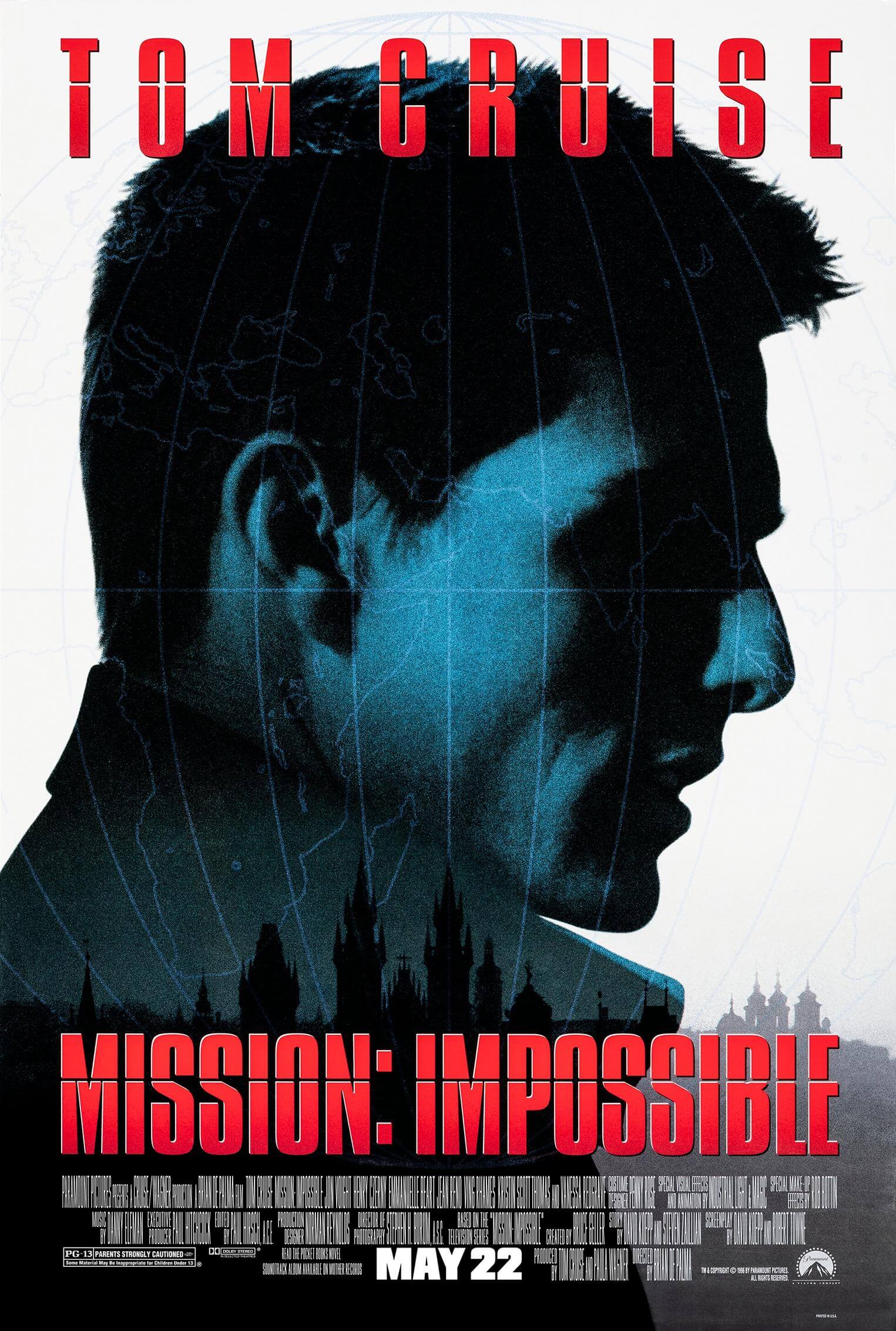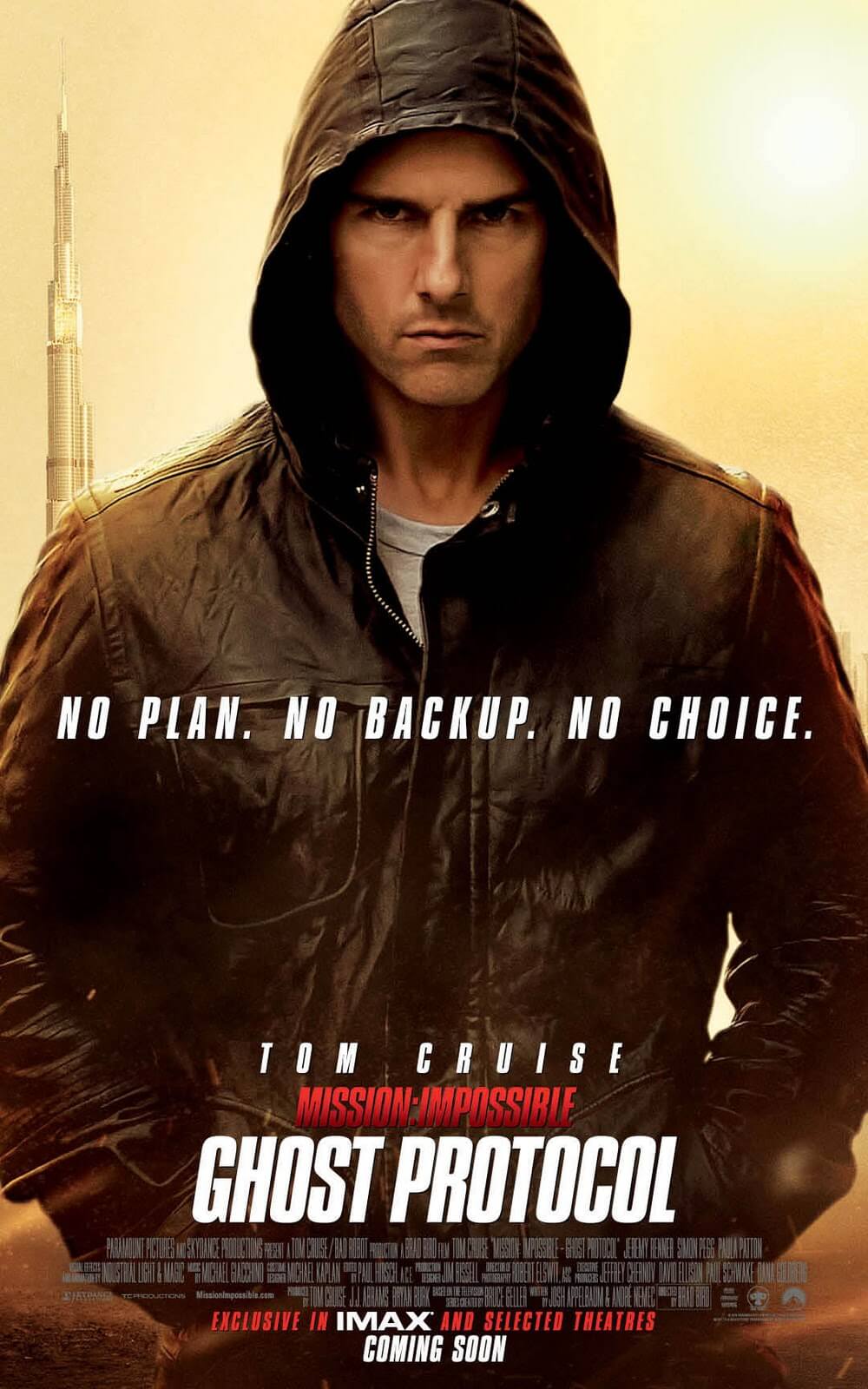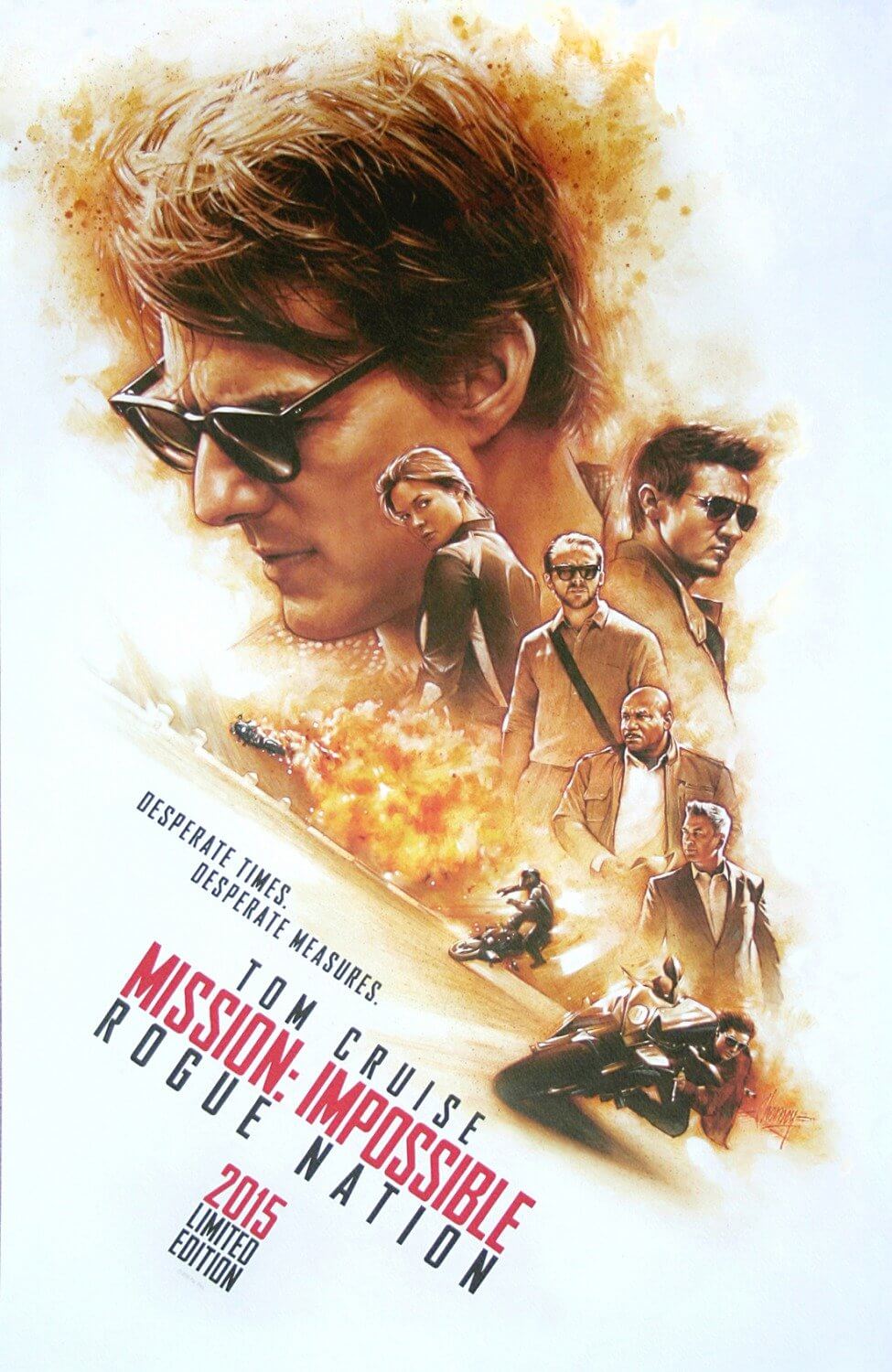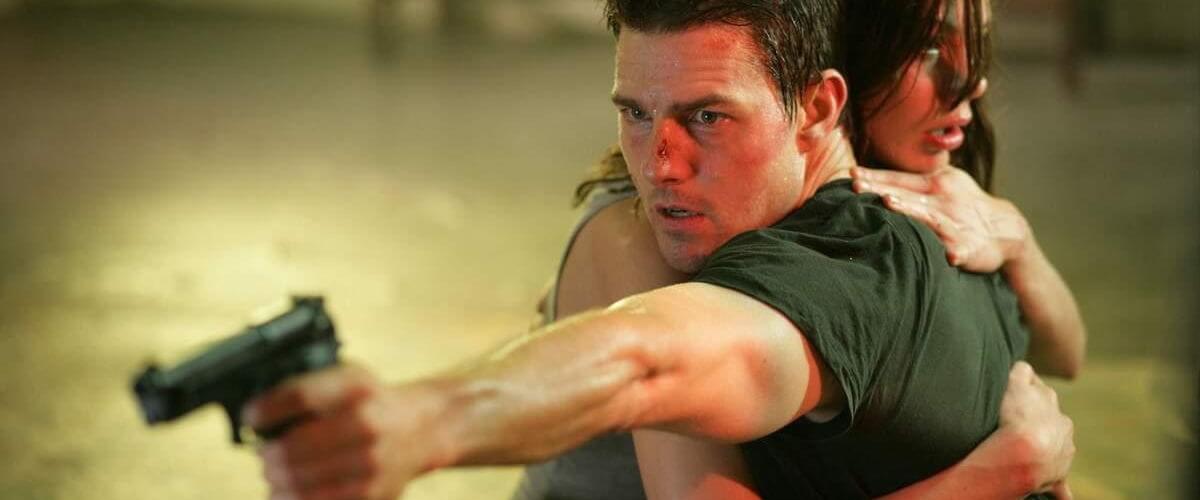
Mission: Impossible III
By Brian Eggert |
For audiences who felt Brian De Palma’s Mission: Impossible (1996) needed more action and human dimension, but also thought Mission: Impossible II (2000) was just another John Woo movie and not the answer, Mission: Impossible III delivers an antidote. J.J. Abrams makes his first transition from television work (Felicity, Lost) into features, and he doesn’t start small. The globe-trotting plot involves all manner of spy gadgetry and exciting action sequences, with some impressive stunts, humor, and dramatic involvement added for good measure. Though its treatment contains few personal flourishes that an assured auteur like De Palma would include, the sequel’s workmanlike approach embraces the brainy plotting of De Palma’s film and the desired action from Woo’s second into a personal mission for the protagonist. For mainstream audiences, it’s easy to argue that Abrams made the best of the franchise up to that point, certainly the most well-rounded and accessible entry yet—not too smart to put off mainstream audiences as De Palma’s film had been, but smarter than Woo’s dunce-of-a-movie.
But the long road from inception to active production for this third franchise entry put six years between Woo’s film and Abrams’ sequel. In some ways, this may have hurt the film’s box-office take (it generated $397 million worldwide, while the first made $454 million worldwide and the second $545 million), as typically Hollywood prefers to strike while the iron’s hot. In another way, this expanse put Woo’s disappointing entry out of the collective moviegoer memory, allowing Paramount and Cruise/Wagner Productions to make their sequel just as stand-alone as the others had been. Over the years, directors ranging from David Fincher to Joe Carnahan came and went from the production, as did actors like Kenneth Branagh and Scarlett Johansson. Millions were spent on development before cameras were ever rolling. Only after Cruise found himself engrossed by the first two seasons of Abrams’ show Alias was he offered the job. Abrams completed the film for a $150 million budget, an impressive price tag for a first-timer.
 Just prior to its release, M:I-III was victimized after the South Park episode “Trapped in the Closet” suggested Cruise was gay. In response, Cruise allegedly blackmailed the conglomerate Viacom by refusing to participate in promotional rounds unless they took the episode off the air. Cruise and his people denied any such involvement, but nevertheless, bloggers and South Park fans responded by boycotting Cruise’s film. This came just two years after Cruise sullied his reputation, and the box-office performance of Steven Spielberg’s War of the Worlds (2005), by leaping on Oprah Winfrey’s couch over his newfound love for Katie Holmes. The August following M:I-III’s May release, Viacom chairman Sumner Redstone announced the company would drop Cruise after a consistently profitable 14-year relationship, citing Cruise’s public behavior as the cause. But here’s another example of why film criticism rarely considers what happens off-screen. Despite Cruise’s antics and questionable judgment, he remains a consistently exciting onscreen presence. Returning to this film so many years after such behind-the-scenes hullaballoo has calmed makes one appreciate Abrams’ work without the added baggage in the press.
Just prior to its release, M:I-III was victimized after the South Park episode “Trapped in the Closet” suggested Cruise was gay. In response, Cruise allegedly blackmailed the conglomerate Viacom by refusing to participate in promotional rounds unless they took the episode off the air. Cruise and his people denied any such involvement, but nevertheless, bloggers and South Park fans responded by boycotting Cruise’s film. This came just two years after Cruise sullied his reputation, and the box-office performance of Steven Spielberg’s War of the Worlds (2005), by leaping on Oprah Winfrey’s couch over his newfound love for Katie Holmes. The August following M:I-III’s May release, Viacom chairman Sumner Redstone announced the company would drop Cruise after a consistently profitable 14-year relationship, citing Cruise’s public behavior as the cause. But here’s another example of why film criticism rarely considers what happens off-screen. Despite Cruise’s antics and questionable judgment, he remains a consistently exciting onscreen presence. Returning to this film so many years after such behind-the-scenes hullaballoo has calmed makes one appreciate Abrams’ work without the added baggage in the press.
In his approach, Abrams sought to explore “the man behind the spy.” He hired Alias writers Alex Kurtzman and Roberto Orci, and together with Abrams, they devised a clever script in which the personal and professional lives of Cruise’s enduring IMF agent Ethan Hunt collide. The film opens not with a throwaway spy scene as the others do, but with a teaser of what’s to come: Hunt is strapped to a chair. An unidentified man, played by Philip Seymour Hoffman (just brilliant), has a gun to a woman’s head. She’s gagged and also strapped to a chair. Hoffman gives Hunt ten seconds to disclose the location of the “Rabbit’s Foot” before the woman, Hunt’s wife Julia (Michelle Monaghan), dies, his intensity and deathly serious voice scorching the scene. Hunt doesn’t know the answers to the man’s questions, but he desperately tries bluffing and bargaining and threatening. Nothing penetrates Hoffman’s lethal glare. This countdown brings us to the opening credits and has already involved the viewer on a dramatically superior note than the film’s predecessors. We are desperate for more.
Early scenes find Hunt celebrating his engagement to his girl-next-door fiancée, the very cute Julia (Michelle Monaghan), who is unaware of his secret spy life. Hunt has retired from active duty, resolving to train IMF agents and settle down under the cover of a traffic analyst. Inevitably, he’s forced to return when his IMF protégé, Farris (Keri Russell), is captured in Berlin during an investigation of arms dealer Owen Davian (Hoffman). Hunt heads out guns blazing with old comrade Luther (Ving Rhames) and some new blood, Declan (Jonathan Rhys Meyers) and Zhen (Maggie Q), to save Farris. But their mission fails, sending them after Davian. They capture their target in a wonderfully slick sequence inside the Vatican, but Davian seems unimpressed, confident even that he’ll escape and take revenge on Hunt’s loved ones. And this happens just as Davian predicts, inciting a powerful note of suspense when we recall the film’s opening. Now in complete control, Davian commissions Hunt to obtain the film’s elusive MacGuffin, the “Rabbit’s Foot,” or else Julia dies.
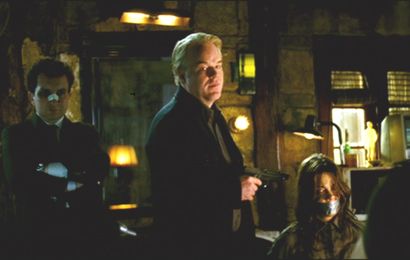
Through it all, the audience never loses sight of Hunt’s goals, the mission’s objective, or his personal stakes. This is in part because Cruise delivers such an imposing performance, his dramatic intensity gluing us to every moment, his energetic and cocky hero more attuned to his performance in De Palma’s film than his turn in Woo’s. But Hoffman steals the show as a villain wholly devoid of conscience; his Davian compares to Alan Rickman’s great action movie villain Gruber from Die Hard, a character both charismatic yet willing to kill in an instant (he’s better than most Bond villains of recent memory). Lawrence Fishburne commands as straight-arrow IMF director Brassel, who lays down his authority with some imposing speeches. Simon Pegg appears as an affable Q-like techie, and Billy Crudup plays Hunt’s IMF superior, Musgrave. It’s also worth noting that this is the first installment where a character refers to IMF as “Impossible Mission Force.”
The production leaps from Virginia to Berlin, from Rome to Shanghai, each venue home to larger and more impressive stunts than the last. Abrams’ fast-moving pace provides action without making M:I-III feel like merely an “action movie”—we’re always more involved in the stakes than the effects. A helicopter chase, a gunfire-rattled warehouse raid, and a spectacular sequence on a bridge (reminiscent of, but superior to, the one in 1994’s True Lies) give way to high-wire feats atop Shanghai skyscrapers. For those who prefer spy indulgences, there’s a superb sequence where we see exactly how IMF agents create on-the-spot latex masks and mimic voices via computer-chip, as Hunt captures Davian and replaces him at the Vatican in a covert op. If there’s one complaint, it’s that the climax involves an underwhelming demise for Davian, although it’s preceded by an extended shot of Tom Cruise running. And no one runs better in movies than Cruise.
What I admire about and why I enjoy returning to Abrams’ sequel is the momentum and emotional immediacy of the plot, a characteristic that carries over to Abrams’ next big-screen effort, 2009’s Star Trek, also co-written by Kurtzman and Orci. Both films—shining with lens flares and fluid camerawork by Dan Mindel—feature complicated plotlines with numerous ongoing strains. They’re exciting, they never slow, they’re never too complicated, and yet they retain their characters’ emotional integrity and, more importantly, the audience’s involvement throughout. All eventually become attributes of Abrams’ best work yet, Super 8 (2011). Abrams may lack De Palma’s singular style that establishes the original as such a distinctive film, but he delivers an all-around solid effort here and, in effect, the most balanced entry of the series from a general audience standpoint. Offering a natural transition from the first film, with Woo’s entry best dismissed from memory, Mission: Impossible III feels like it should have come sooner, but let’s just be grateful it came at all.
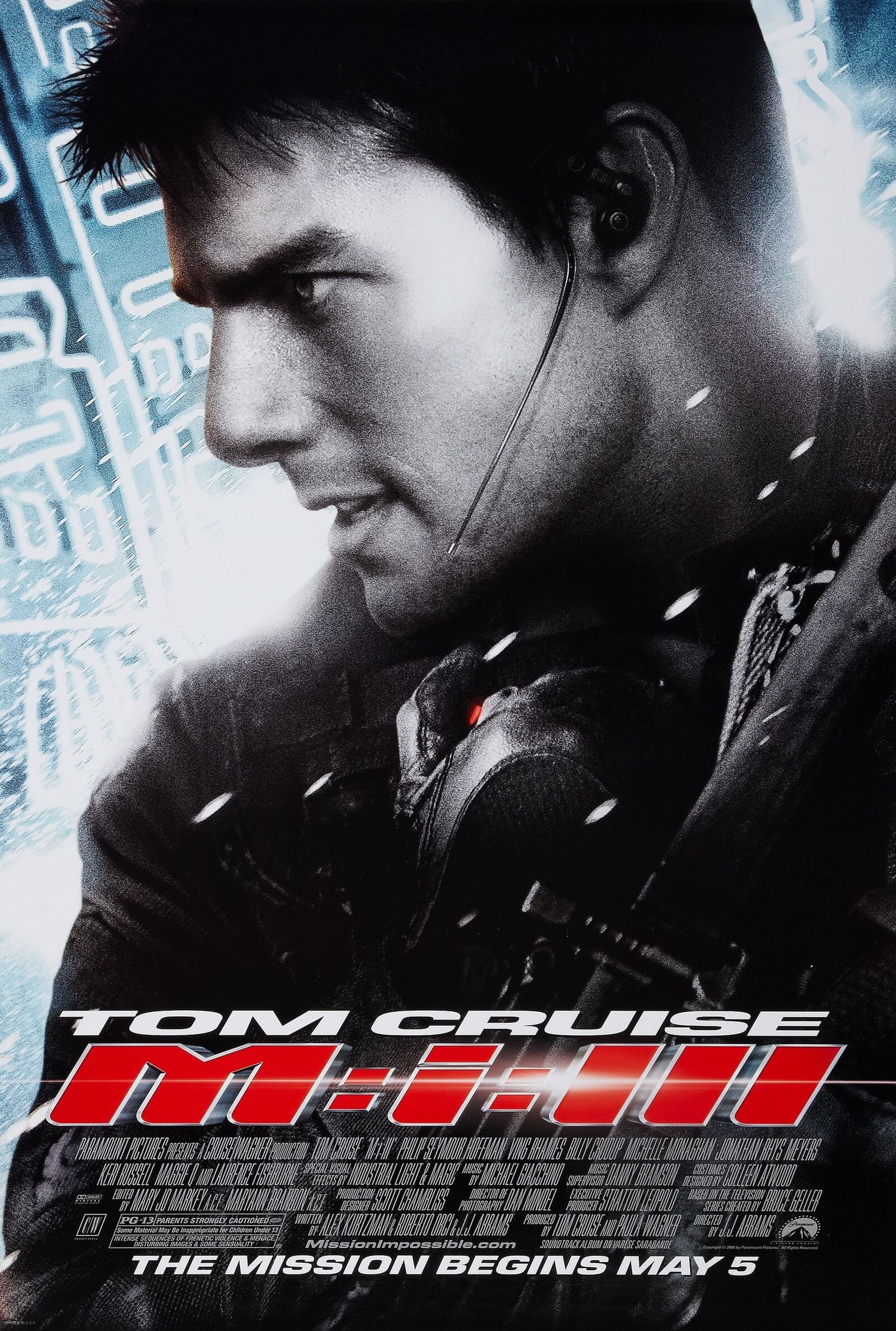
Thank You for Supporting Independent Film Criticism
Thank you for visiting Deep Focus Review. If the work on DFR has added something meaningful to your movie watching—whether it’s context, insight, or an introduction to a new movie—please consider supporting it. Your contribution helps keep this site running independently.
There are many ways to help: a one-time donation, joining DFR’s Patreon for access to exclusive writing, or showing your support in other ways. However you choose to support the site, please know that it’s appreciated.
Thank you for reading, and for making this work possible.
Brian Eggert | Critic, Founder
Deep Focus Review


